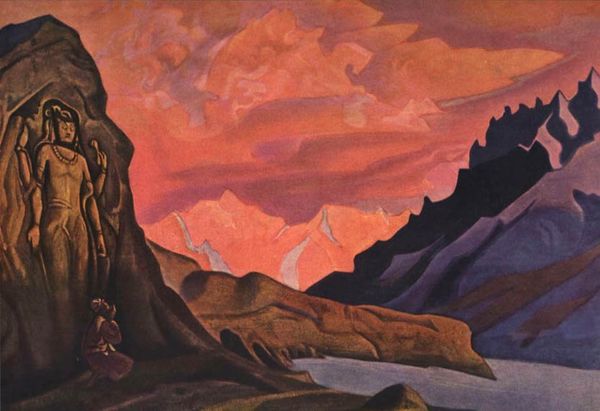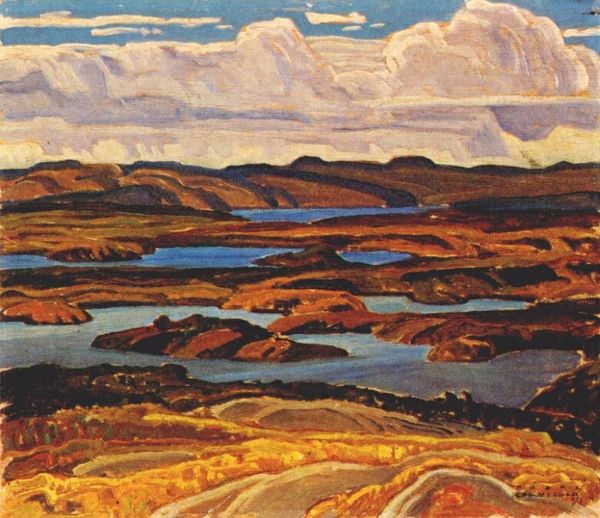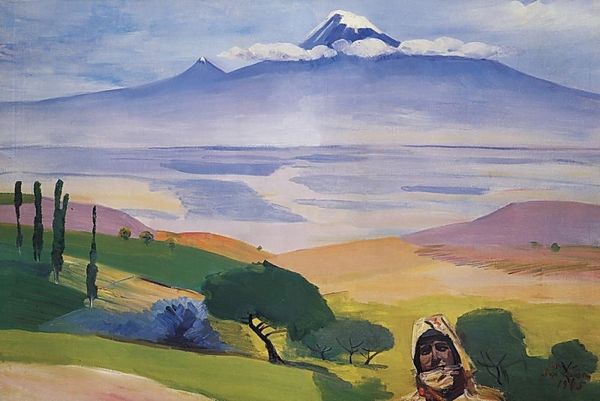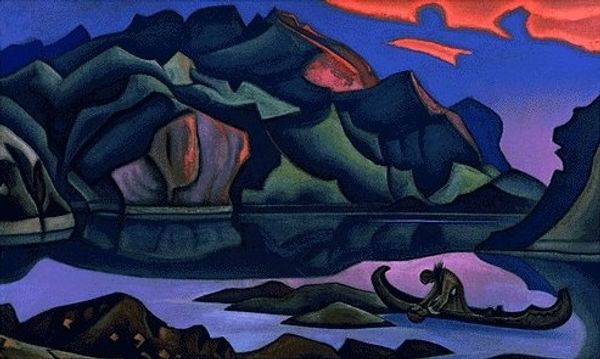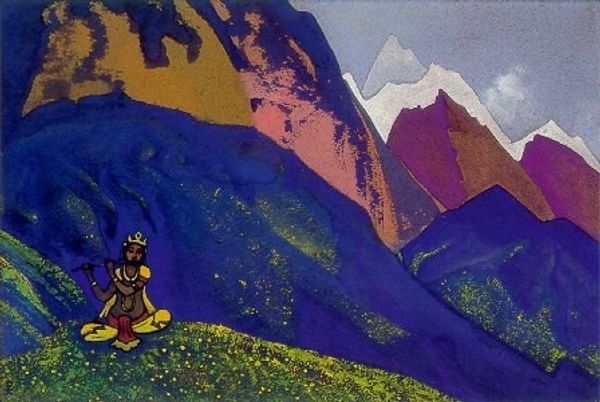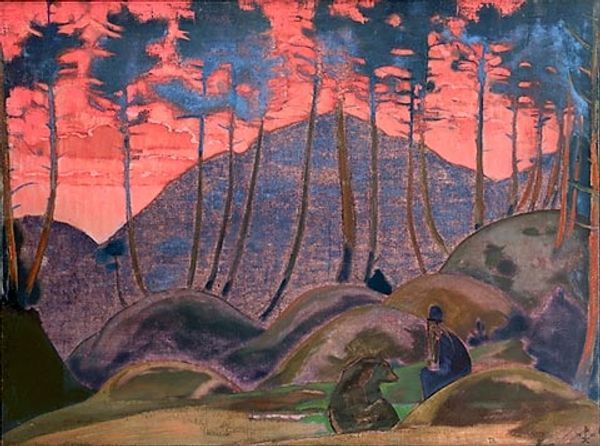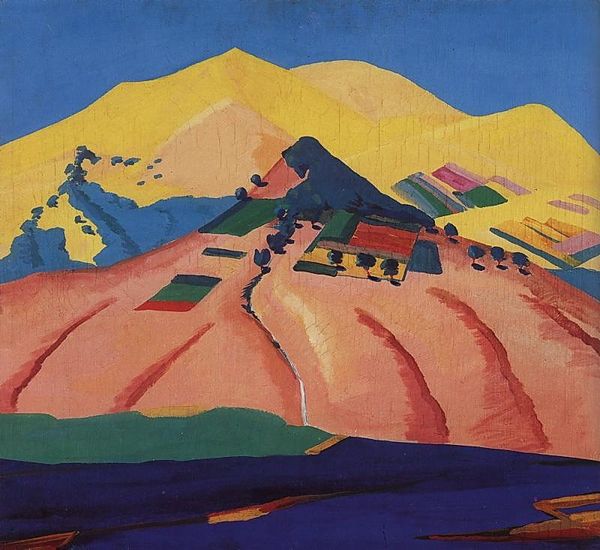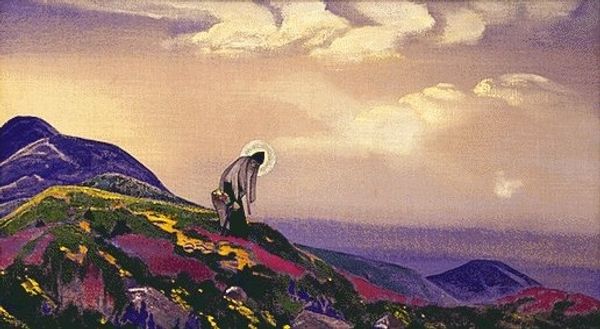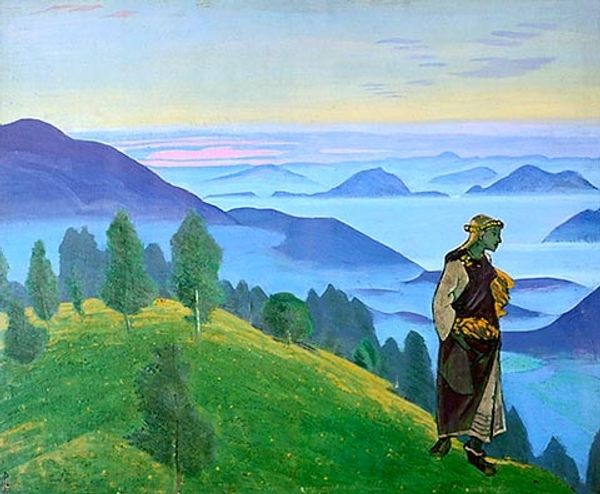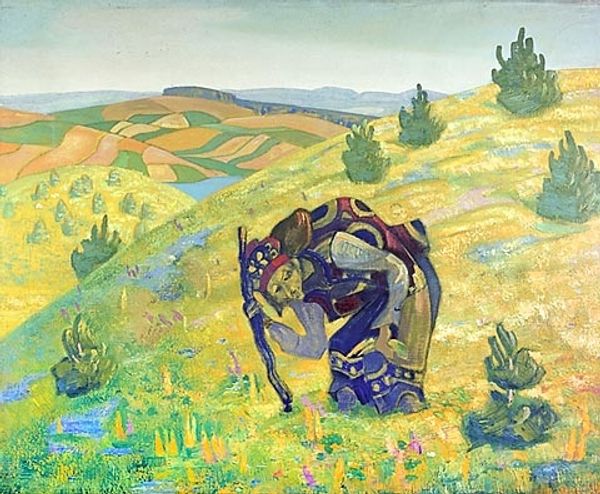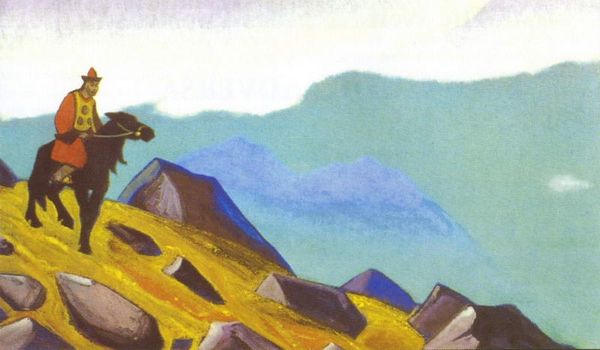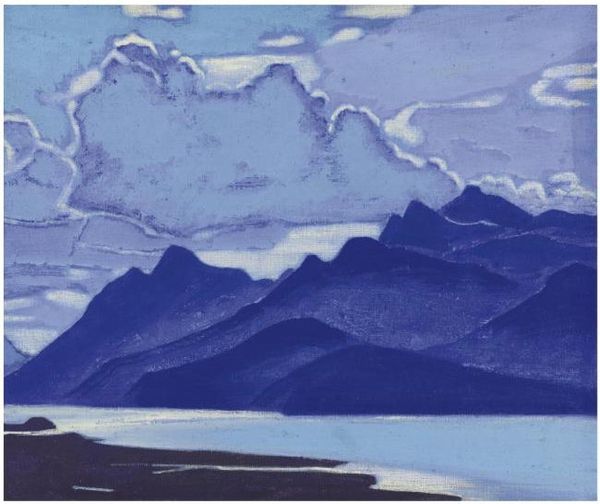
tempera, painting
#
sky
#
byzantine-art
#
tempera
#
painting
#
grass
#
landscape
#
figuration
#
christianity
#
line
#
symbolism
#
northern-renaissance
Dimensions: 70 x 105 cm
Copyright: Public domain
Editor: Here we have "Procopius the Righteous is praying of unknown navigating", painted by Nicholas Roerich in 1914, using tempera. I’m struck by the simple, almost flattened forms, and the intense blues and greens. It gives the scene a mystical feeling. What do you see in this piece? Art Historian: Well, I'm drawn to how Roerich uses tempera. Notice how the matte surface and the layering of pigments emphasize the materiality of the painting itself. Consider where Roerich, steeped in Russian Symbolism, was exhibiting and to whom, who would have been purchasing or not purchasing and how they are experiencing labor at this time? It’s interesting to analyze not only what is depicted, but how those materials relate to social contexts, specifically issues around class, labor and industry? Editor: I hadn’t thought about the tempera that way, just about the colours it produces. Are you saying the materials themselves hold meaning? Art Historian: Precisely. Tempera, unlike oil, dries quickly and demands precision. Its use here speaks to a specific production process, perhaps even a rejection of industrial modes of creation, hinting at the labor involved and possibly pointing to a critique of consumer culture by suggesting slower art consumption and creation. It is by no means incidental that Roerich often chooses pigments of precious origin and intense symbolic power to amplify an atmosphere of spiritual truth in connection with the depiction. Why do you think he picked this process and its connection with craftsmanship to show a religious figure? Editor: Maybe he's drawing a parallel between the saint's dedication to prayer and the artist's dedication to craft? It links the spiritual and the material worlds together. Art Historian: Exactly! And look at the repetitive, almost mechanical application of paint in the sky, compared to the more fluid river. Could that also suggest Roerich’s own commentary about society's movement into an industrial era? Editor: That's really interesting. I was just focusing on the religious aspect, but now I see how much the materials and technique add another layer of meaning. Thank you! Art Historian: My pleasure! It is very powerful how an object communicates the environment and processes in which it was conceived and developed.
Comments
No comments
Be the first to comment and join the conversation on the ultimate creative platform.
